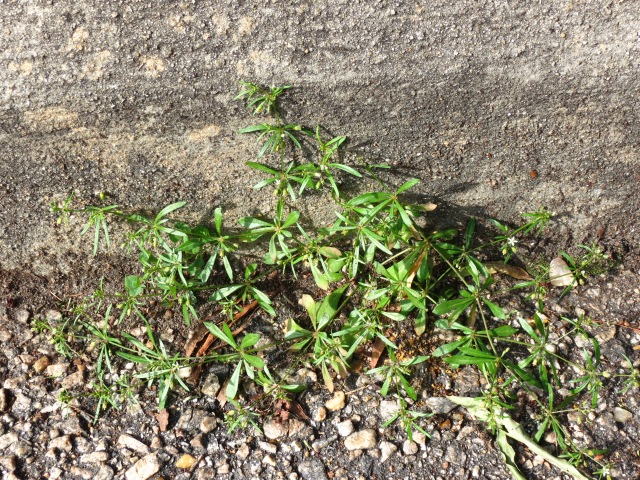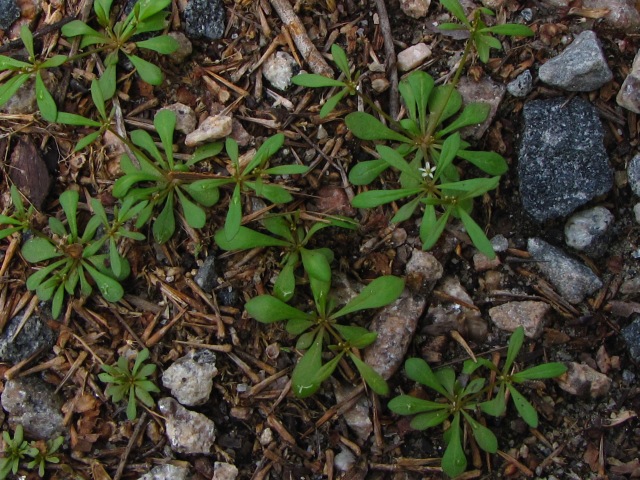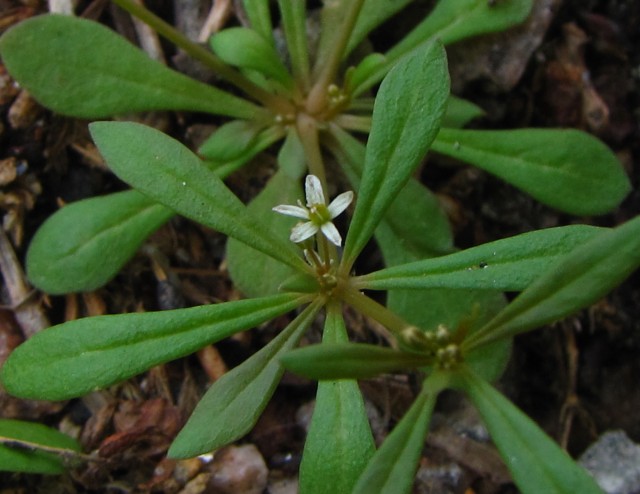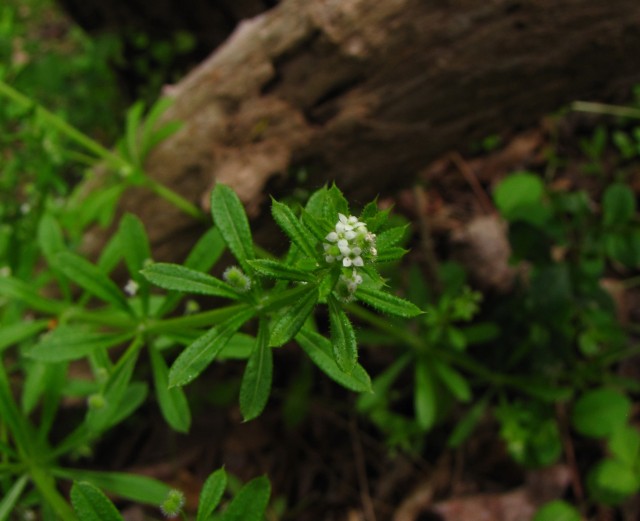“Why write about weeds?” I am sometimes asked. Although there are many reasons, here is an interesting one: Weeds are the future. That is one thesis in Peter Del Tredici’s excellent book Wild Urban Plants of the Northeast – A Field Guide. “Weeds are the symptoms of environmental degradation, not its cause, and as such they are poised to become increasingly abundant within our lifetime.”
The Carpetweed, Mollugo verticillata, is one of the plants featured in the book, a tough survivor often living in cracks in urban and suburban sidewalks and roads. The Carpetweed and its allies tolerate dry soils, cycles of extreme heat, elevated levels of CO2 and other contaminants, and even being walked upon.
Below is a typical Carpetweed in late September growing in a crack between a paved parking lot and a concrete wall at the Falls Lake Dam.
Carpetweeds can sometimes form a dense mass when several plants grow together. In tangled form, they can be easily confused with Bedstraws, which have a similar form but are in a completely different plant family.
Carpetweeds are summer annuals. Relatively slow to germinate in the spring, they grow very quickly thereafter. Blooms begin to appear on young plants in June, and blooming continues into late fall. The photos below were taken in June when the younger plants have a more compact form.
Carpetweed flowers have 5 petals, which helps to differentiate them from Bedstraws, whose flowers have 4 petals. The two are compared below.
Carpetweeds are highly variable in size, growth form and leaf shape, which can make them more difficult to identify and separate from Bedstraws. Bedstraws are in the coffee family, Rubiaceae, while Carpetweeds are in the Molluginaceae family.
Here are a couple of ways to differentiate the two:
Carpetweeds grow and bloom in the summer and fall (with 5 petals), while Bedstraws are winter annuals that bloom in the spring (with 4 petals).
Both are sprawling plants with whorled leaves. But Carpetweeds have relatively smooth stems, while most Bedstraws have rough, hairy stems that help them climb and cling for stability.
Herb Amyx





